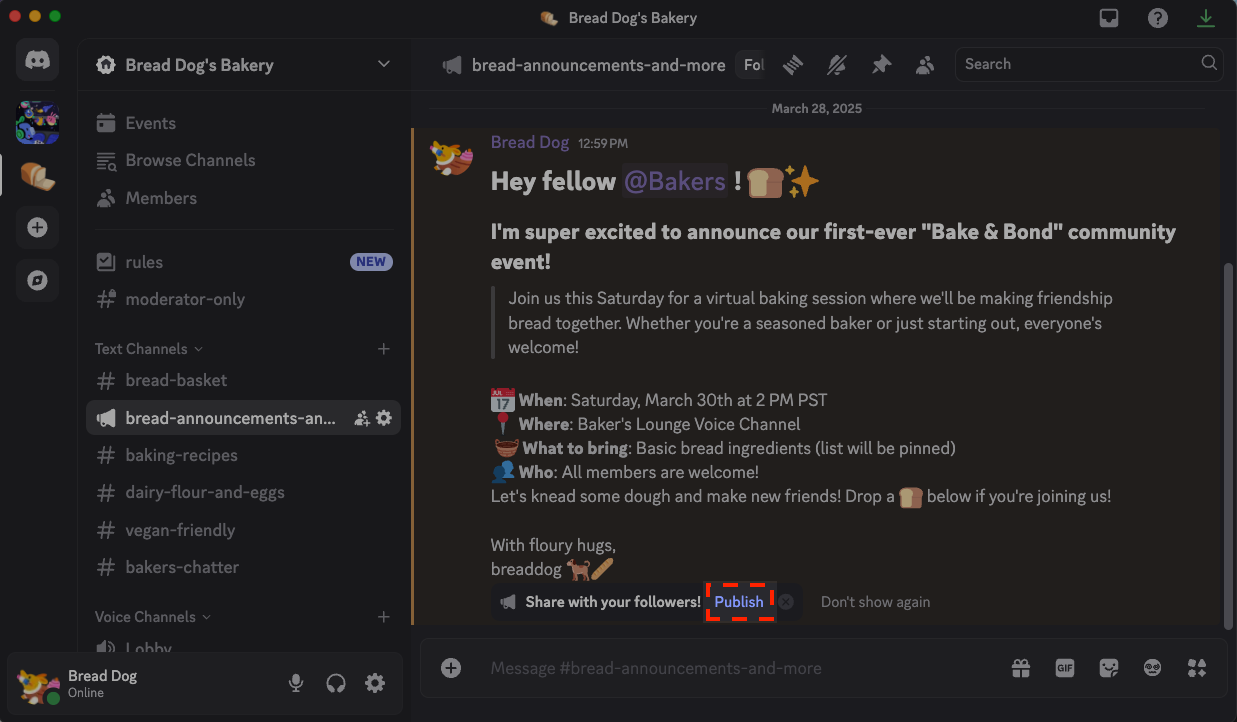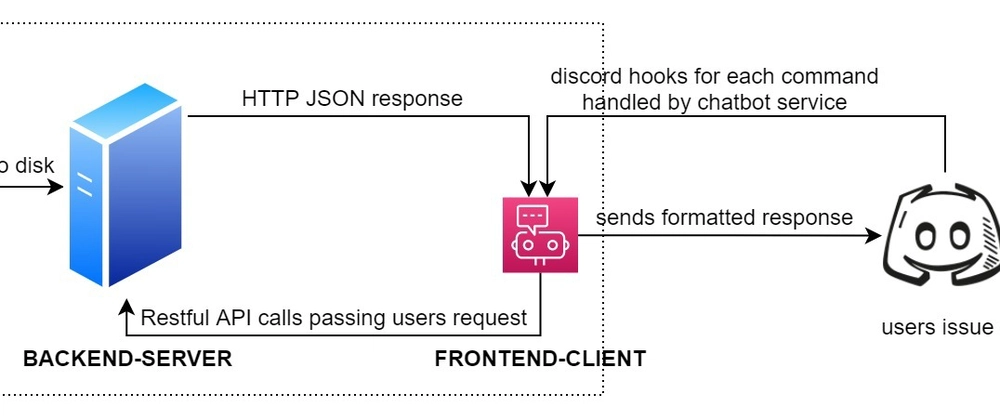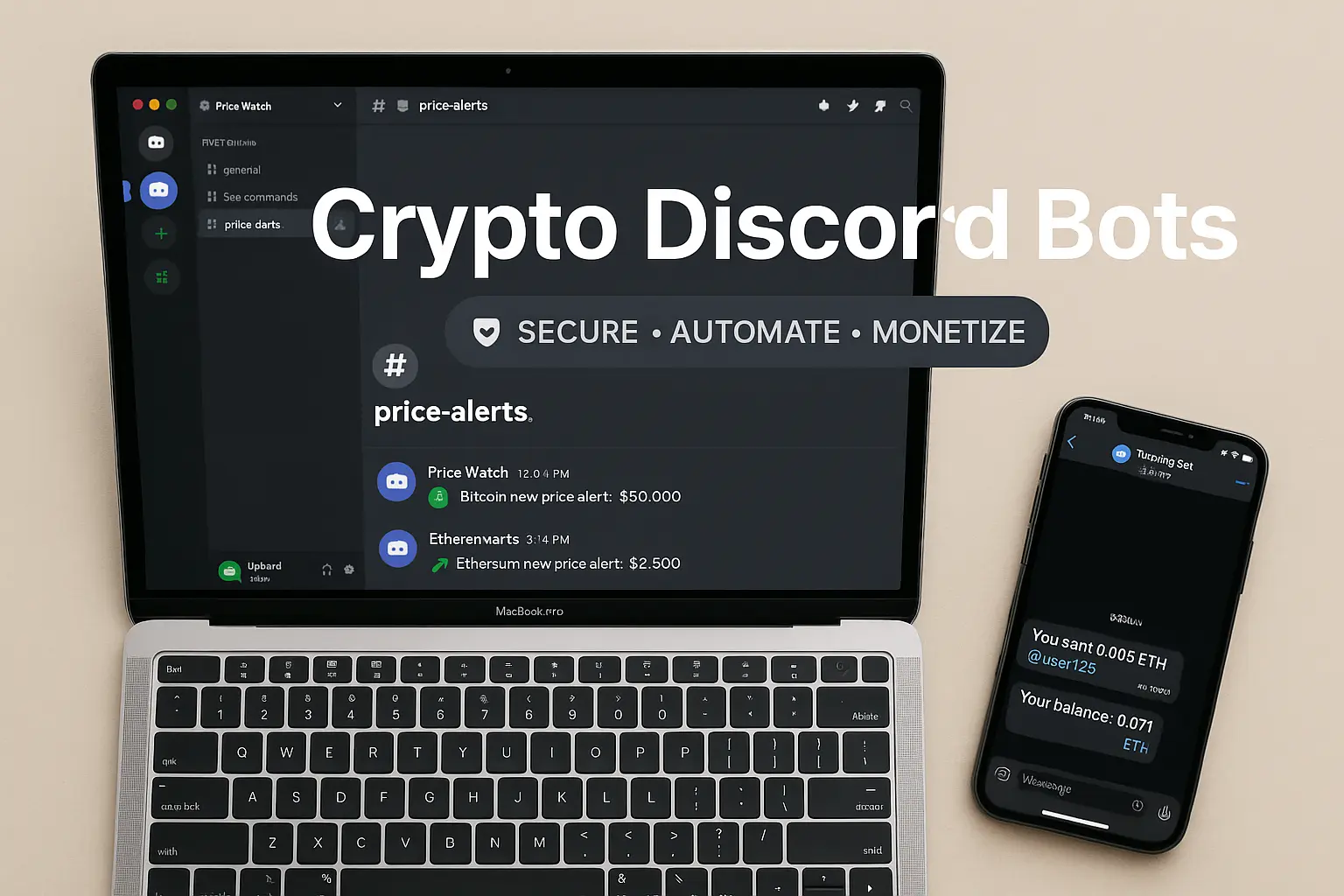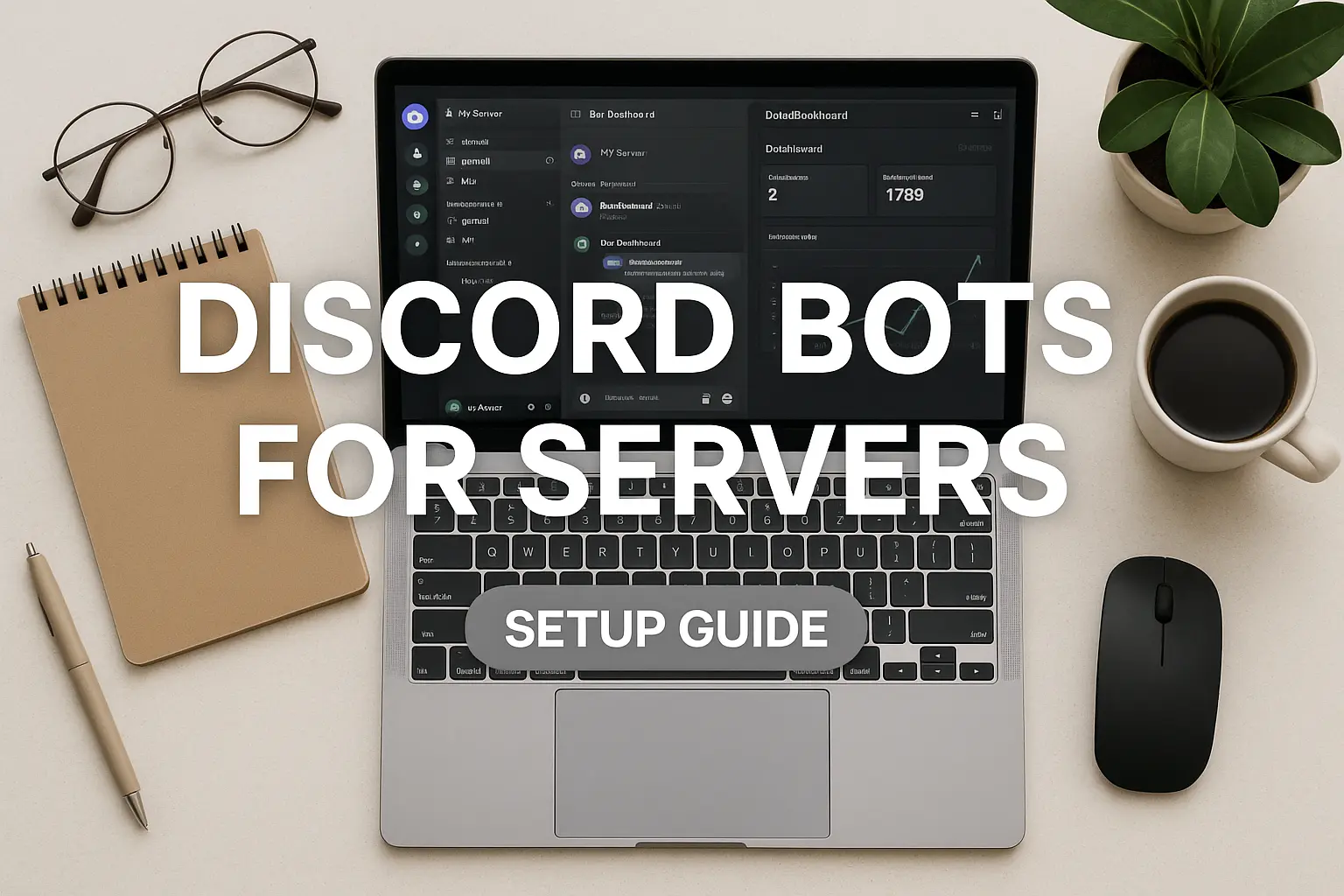If you run a crypto-focused Discord server — trading community, NFT project, token team, or hobbyist group — bots are your engine. They deliver price alerts, portfolio snapshots, token info, swap links, tipping, and basic on-chain tools that make member experience smooth and useful. Done right, bots turn chaos into signal. Done wrong, they turn your server into a spammy, scammy mess.
This guide walks you through the what, why, and how of crypto Discord bots: what common bot types do, which features actually help communities, how to secure your server, quick setup tips, monetization ideas, and a simple checklist to ship improvements in a weekend. I’ll keep it practical, human, and copy-ready — so you can paste commands into your admin channel and actually see results.
“Bots are like your moderators’ Swiss Army knife: tiny tools that do one job well and keep the server running.”
— community managers who don’t sleep on automations
Why crypto servers need bots
Crypto conversations move fast. Prices change, whitelists open, and scams pop up daily. Bots automate routine tasks so human moderators focus on judgment calls: community disputes, verification, and strategy.
Bots are useful because they:
- Push real-time price or NFT floor alerts so members don’t miss moves.
- Offer on-demand token info (market cap, supply, contract address) to cut down FUD.
- Run tipping and rewards so contributors get paid without manual transfers.
- Provide moderation and raid protection tuned for crypto-targeted attacks.
All good — but a big caveat: crypto features attract scammers. That means your bot checklist should add safety layers, not just convenience.
Core bot types for crypto Discord servers
Price & market data bots
These bots fetch live price, 24h change, and market cap for coins or tokens. Handy commands like /price BTC or /token USDT give instant context during hot discussions.
Portfolio & watchlist bots
Members link wallets or set watchlists so they can quickly query portfolio value or get alerts when a watched asset moves.
Tipping & micro-payments
Tipping bots let members send tiny amounts in crypto (tips, bounties, rewards). They help community engagement and reward contributions without manual on-chain transfers every time.
Token info & contract lookup
Bot commands that show on-chain metadata, token holders, contract addresses, and verified source links reduce FUD and speed research.
Swap / DEX shortcuts (read-only mostly)
Some bots create read-only swap previews or link to DEXes. Full on-chain trading via bots is high-risk — most communities prefer buttons that open a wallet or DEX page rather than bots executing trades.
Moderation & anti-scam bots
These are critical for crypto servers: auto-moderation for suspicious links, anti-raid protection, account age gates, and automated pinning of official contract addresses. Combine these with human review.
Alerts & webhook integrations
Integrate with Twitter/X, Telegram, and on-chain listeners (contract events) to push curated updates into your server.
“The best crypto bots do one thing and do it well — keep price alerts accurate, tip transfers reliable, or mute phishing links fast.”
— small teams with tight moderation budgets
Security: what to lock down first
Crypto communities are prime targets for phishing, contract impersonation, and pump-and-dump schemes. Use bots to help, but never rely on automation alone.
Least-privilege permissions
Give bots only the permissions they need. Avoid Administrator unless absolutely required. Create a dedicated bot role so you can quickly revoke access.
Verification gates
Use captcha/age-of-account checks before new users can post links or send messages. Many raid accounts are freshly created; an account-age filter helps a lot.
Trusted links & pinned truths
Pin official contract addresses, admin lists, and FAQ in a read-only channel. Many bots let you auto-respond when someone posts an unverified contract link with a gentle “Did you mean the verified contract?” message.
Whitelist vs blacklist
Whitelist contract addresses, official sites, and payment addresses that the bot recognizes. Block domains commonly used by scammers.
Audit logs & alerts
Log bot actions (who minted, who tipped, who changed roles) to a private admin channel. If a bot behaves oddly, logs give context fast.
Don’t automate funds movement lightly
Never give a bot full control to move funds without multi-sig or human confirmation. Tip-only flows and escrow models are far safer than unattended fund transfers.
“If your bot’s token leaks, treat it like a private key leak: rotate it immediately and audit recent actions.”
— essential incident-response advice
Quick setup: two bots to install this weekend
If you want immediate wins, install one price bot and one moderation/tipping helper. Here’s a minimal, copyable plan:
- Create a
Botrole with minimal permissions (Send Messages, Embed Links where needed). - Add a price bot for
/priceand/watchcommands. Configure default currency and timezone. - Add a moderation bot with Anti-Raid, Link Filter, and Captcha gates. Connect its logs to a private
#mod-logchannel. - If you want community rewards, add a tipping bot but configure withdrawal lock (admin approval) until you confirm reliability.
Small wins: welcome automation + pinned contract info + price feed = big drop in noise.

Moderation rules and bot configurations that actually work
- Auto-mute new users for 5–10 minutes before they can post links (allow text first).
- Auto-flag and quarantine messages with contract addresses that aren’t on the whitelist.
- Rate-limit messages per user to cut spam bots.
- Auto-delete shortened links and ask users to paste full URLs; shorteners are a favorite phishing vector.
- Use reaction roles for KYC/consent: members click a role to get access to trading channels after reading rules.
These are simple; they protect more than you’d expect.
Monetization strategies for bot devs & server owners
If you build a reliable crypto bot or run a high-value server, you can monetize responsibly:
Paid premium features
Offer basic price checks for free, and charge for advanced alerts (multi-condition alerts, cross-exchange arbitrage notifications, or portfolio-level analytics).
Hosted SaaS model
Host the bot and charge a monthly fee for uptime, support, and premium integrations (on-chain event tracking, private data endpoints).
Tip/fee on transactions
For tipping bots, consider a small optional fee or premium withdrawal priority for paid users. Be transparent about fees.
Affiliate links with guardrails
If you link to exchanges or wallets, disclose affiliate relationships and ensure links go to official, verified destinations only. Transparency builds trust.
White-label or custom integrations
Offer tailored bots for NFT projects: whitelist checking, claim bots, or mint trackers for a setup fee.
Always be upfront about fees, privacy, and your security posture — crypto users will check.
Privacy & legal notes — tread carefully
Crypto bots often handle wallet addresses, IPs, and sometimes small amounts of funds. Consider these:
- Be explicit about what data you collect and how long you store it. Publish a short privacy note.
- If you store keys/tokens for users, implement secure storage and backups — and prefer not to store them at all. Use user-controlled wallets and sign-in flows.
- Check local law: payout services and token sales can touch payments regulation in some jurisdictions. Don’t promise tax or legal advice.
- Disclose affiliate relationships and paid placements. Transparency avoids community blowback.
A small legal checklist and a pinned privacy note are cheap trust-builders.
Troubleshooting common issues
Bot not responding: Check permissions, channel overrides, and whether the bot’s status is online. Many bots go down during API changes.
False positive link blocks: Add exceptions for official partners. Keep a mod-only override command to release quarantined posts.
Abuse of tipping features: Add anti-abuse rules: daily caps and rate limits. Require a minimum account age for tipping.
Scam contract posting: Use automated contract checks plus human review. A quick “is this verified?” response from a bot reduces panic.
Building your own crypto bot: starter checklist
If you want a custom bot, here’s a minimal roadmap:
- Pick a framework (discord.js, discord.py, or other).
- Design command set: /price, /watch, /tip, /verify, /alerts. Keep commands concise.
- Use reliable data providers (price feeds, on-chain indexers) and cache aggressively to avoid rate limits.
- Implement secure token storage and rotate tokens on deploy.
- Build an admin dashboard for the whitelist and logs.
- Test extensively with a staging server and dummy wallets.
For tip flows and any on-chain action, make sure you test edge cases (re-orgs, failed txs, gas spikes).

Best practices for community trust
- Publish an official “how to verify” guide for contracts and token links.
- Keep a small, trusted admin list and rotate duties so no single person is the gate.
- Run regular “scam alerts” where you educate members on current phishing techniques.
- Encourage members to DM mods instead of reposting suspicious links publicly.
- Keep withdrawal paths for tips clear and well-documented.
Trust is the hard currency in crypto servers. Small transparency steps pay big dividends.
“A community that understands basic safety — verified contracts, how to check links, and how to report scams — is 10x safer than a fortress with no education.”
— proven community-building wisdom
Final checklist: launch a safer, more useful crypto Discord in a weekend
- Install price bot and configure default currency/timezone.
- Add moderation bot with captcha and link filters.
- Create a pinned
#official-contractschannel and post verified addresses. - Set bot role permissions to least-privilege.
- Test a tipping flow in a private channel with dummy wallets.
- Publish a short privacy & fees note if you accept tips or host paid features.
- Schedule a weekly “scam watch” post for members.
“Start small, document everything, and iterate. The safest servers are the ones you can reproduce and recover quickly.”
— last piece of admin advice you’ll actually use



